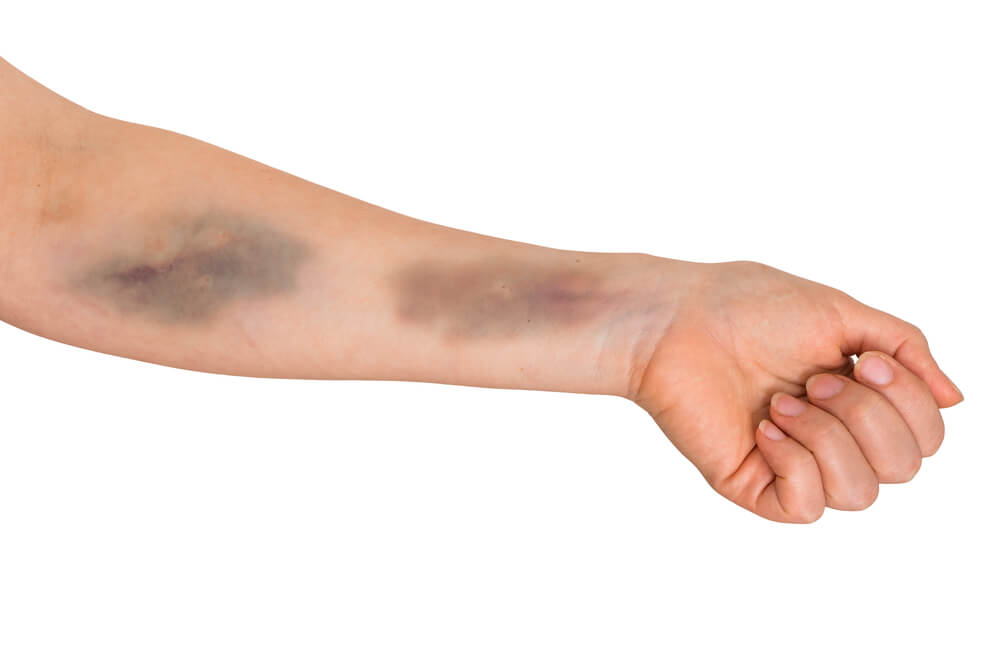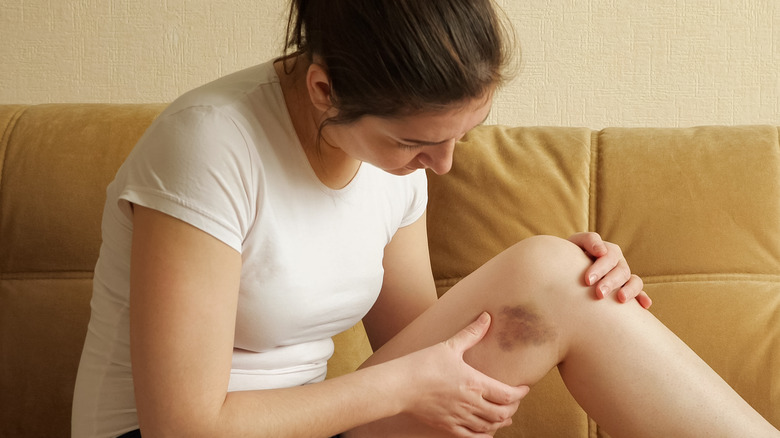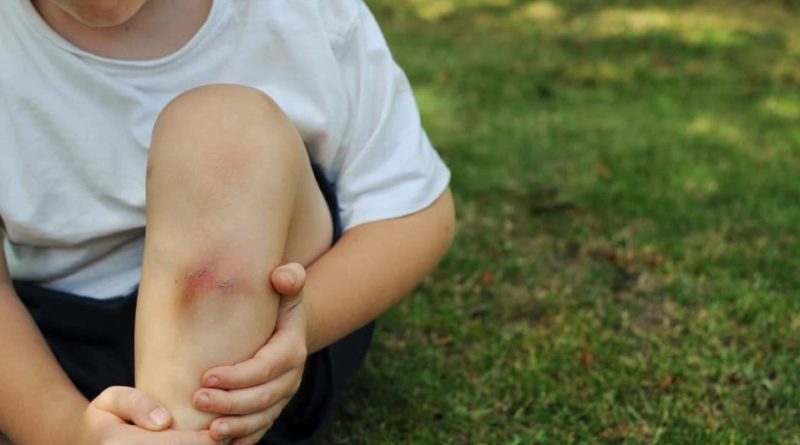What are Bruises? Guide about Types of Bruises and Their Duration.
Bruises are a common occurrence in our lives, often resulting from accidental bumps or injuries. They manifest as discolored patches on the skin caused by broken blood vessels beneath the surface. While most bruises are harmless and heal naturally, it’s essential to understand the different types of bruises and how long they typically last. In this article, we delve into the world of bruises, exploring their nature, classification, and the factors that influence their duration.
I. What are Bruises?
A. Definition and Characteristics:
- Bruise Formation:
A bruise, or a contusion, occurs when small blood vessels near the skin’s surface rupture, leading to blood leakage into the surrounding tissues. - Skin Discoloration and Appearance:
Bruises initially appear as reddish or purplish patches on the skin due to the accumulation of blood beneath the surface. Over time, the color changes to blue, green, and yellow, eventually fading as the body reabsorbs the blood.
B. Causes of Bruises:
- Traumatic Injury:
The most common cause of bruises is physical trauma, such as bumping into objects, falling, or being involved in accidents. - Medications:
Certain medications, such as blood thinners (e.g., aspirin, warfarin), can increase the risk of bruising by affecting the blood’s ability to clot. - Medical Conditions:
Underlying health conditions, including bleeding disorders like hemophilia or platelet disorders, can make individuals more prone to bruising.
II. Types of Bruises:

A. Subcutaneous Bruises:
- Superficial Bruises:
These bruises occur just below the skin’s surface and are often caused by minor injuries. They are characterized by mild pain and discoloration that typically resolves within a week. - Deep Bruises:
Deep bruises involve the tissues deeper beneath the skin. They often result from more significant trauma and may take longer to heal, ranging from weeks to months. - Hematomas:
Hematomas are a type of deep bruise where blood collects and form a localized swelling or lump. They tend to be more painful and may take several weeks or even months to resolve completely.
B. Intramuscular Bruises:
- Sports-Related Bruises:
Athletes and active individuals are prone to intramuscular bruises due to direct blows or repetitive muscle strain during physical activities. The severity of these bruises varies, with mild cases healing within a couple of weeks. - Muscle Strains and Tears:
Severe muscle strains or tears can result in significant intramuscular bruising, which may require several weeks or even months to heal completely. - Deep Tissue Damage:
Deep tissue bruises occur when trauma affects the muscles, connective tissues, and blood vessels surrounding them. These bruises can take weeks or months to heal, depending on the extent of the injury.
C. Periosteal Bruises:
- Bone Bruises:
Bone bruises occur when there is damage to the bone beneath the skin’s surface. They often accompany fractures or significant trauma and may take weeks or months to heal, similar to deep bruises. - Fractures and Bone Trauma:
In cases of severe bone fractures or trauma, periosteal bruising may occur. The duration of these bruises depends on the nature and severity of the injury, ranging from weeks to several months.
III. Factors Affecting Bruise Duration:
A. Severity of the Injury:
The extent of the trauma plays a significant role in determining how long a bruise will last. More severe injuries tend to cause deeper bruising and may take longer to heal completely.
B: Age and General Health:
Young children and the elderly may experience slower healing times due to differences in skin thickness, circulation, and overall health. Chronic health conditions, such as diabetes or immune disorders, can also impact the body’s ability to heal bruises efficiently.
C. Location of the Bruise:
Bruises located in areas with better blood circulation, such as the face and upper body, tend to heal faster than those in regions with limited blood flow, such as the lower legs. Areas subjected to constant movement or pressure, such as joints, may also experience prolonged healing times.
D. Blood Disorders and Medications:
Individuals with blood clotting disorders or taking medications that affect clotting (anticoagulants) may experience delayed healing of bruises. These conditions can impair the body’s ability to form blood clots and reabsorb the leaked blood.
E. Healing Capacity:
Each person’s healing capacity varies, influenced by genetic factors and overall health. Some individuals naturally heal faster than others, leading to variations in bruise duration.
IV. Healing Stages of Bruises:
A. Acute Stage:
- Immediate Response:
Immediately after the injury, blood vessels constrict to minimize blood loss. This initial phase lasts for a few hours and is characterized by localized pain and swelling. - Inflammatory Process:
Inflammatory cells are recruited to the injured area, triggering an immune response. This stage typically lasts for a few days and is associated with visible bruising and increased tenderness.
B. Subacute Stage:
- Cellular Repair:
Specialized cells called fibroblasts start repairing damaged tissues by producing collagen, a protein that forms the structural framework of the skin. This stage can last for several days to a week. - Reabsorption of Blood:
The body gradually reabsorbs the accumulated blood through a process called phagocytosis. The bruise may change color during this stage as the breakdown products of hemoglobin are metabolized.
C. Chronic Stage:
- Remodeling of Tissues:
Collagen fibers realign and remodeled during this stage, restoring the structural integrity of the damaged area. This process can take weeks to months, depending on the severity of the bruise. - Restoration of Normal Skin Color:
The bruise gradually fades as the body removes the residual blood pigments and restores the normal skin color. This final stage may take several weeks to complete.
V. Expected Duration of Bruises:
A. Superficial Bruises:
Superficial bruises usually heal within 1 to 2 weeks, with the initial discoloration fading and the pain subsiding over time.
B. Deep Bruises and Hematomas:
Deep bruises and hematomas can take anywhere from 2 to 4 weeks or even longer to fully heal, depending on their size and severity.
C. Intramuscular Bruises:
Intramuscular bruises may require 2 to 6 weeks for healing, depending on the extent of muscle damage and the individual’s healing capacity.
D. Bone Bruises:
Bone bruises often take several weeks or months to heal, especially if they accompany fractures or severe trauma.
E. Factors Influencing Healing Time:
The healing duration can be influenced by various factors such as age, overall health, location, severity, and individual healing capacity as discussed earlier.
VI. Home Remedies and Management:

A. Immediate First Aid:
Apply ice wrapped in a cloth to the affected area to reduce swelling and pain. Avoid applying ice directly to the skin to prevent ice burns.
B. Applying Cold Compresses:
Use cold compresses intermittently during the first 48 hours to reduce inflammation and promote healing. Apply the cold compress for 15-20 minutes at a time, allowing the skin to rest between applications.
C. Elevating the Affected Area:
Elevating the bruised area above the heart level can help reduce swelling by facilitating fluid drainage. Prop pillows or cushions to keep the affected limb elevated whenever possible.
D. Over-the-counter Medications
Nonsteroidal anti-inflammatory drugs (NSAIDs) such as ibuprofen or acetaminophen can help alleviate pain and reduce inflammation associated with bruises. Follow the recommended dosage instructions and consult a healthcare professional if you have any concerns or underlying medical conditions.
E. Topical Remedies:
Applying topical creams or gels containing arnica, vitamin K, or bromelain may help promote healing and reduce bruise discoloration. These remedies should be used as directed and in consultation with a healthcare professional.
VII. When to Seek Medical Attention:
A. Signs of Complications:
If bruises or shows signs of infection, such as redness, warmth, or pus formation, it is important to seek medical attention. These could be indications of a more serious underlying condition or complications.
B. Recurrent or Unexplained Bruising:
If you notice recurrent or unexplained bruising without any apparent injury, it is advisable to consult a healthcare professional. It could be a sign of an underlying medical condition that requires evaluation and treatment.
C. Severe Pain and Swelling:
If the pain and swelling associated with the bruise worsen over time or become unbearable, medical attention should be sought to rule out fractures, deep tissue damage, or other complications.
FAQs about Bruises
- What exactly is a bruise?
A bruise, also known as a contusion, is a discoloration of the skin caused by damage to blood vessels underneath the surface. It occurs when blood leaks into the surrounding tissues due to trauma or injury. - How long does a typical bruise last?
The duration of a bruise can vary depending on several factors, including the severity of the injury, location of the bruise, individual healing capacity, and underlying health conditions. In general, most bruises heal within 1 to 3 weeks. - What are the different types of bruises?
There are various types of bruises, including superficial bruises just below the skin’s surface, deep bruises involving deeper tissues, hematomas (localized blood collections), intramuscular bruises affecting muscles, and bone bruises accompanying bone injuries or fractures. - Are bruises painful?
Bruises can be painful, especially during the initial stages of inflammation. The pain level may vary depending on the severity and location of the bruise. - How can I speed up the healing process of a bruise?
While bruises generally heal naturally over time, you can take certain steps to promote healing. Applying a cold compress during the first 48 hours can reduce swelling. Elevating the affected area above the heart level can help with fluid drainage. Over-the-counter medications like NSAIDs can help alleviate pain and reduce inflammation. Maintaining a healthy lifestyle, including a balanced diet and regular exercise, can support overall healing. - When should I seek medical attention for a bruise?
Medical attention should be sought if a bruise is accompanied by severe pain, excessive swelling, signs of infection (redness, warmth, pus), or if the bruising occurs without any apparent cause. Recurrent or unexplained bruising should also be evaluated by a healthcare professional. - Can certain medications or medical conditions increase the likelihood of bruising?
Yes, certain medications, such as blood thinners (anticoagulants), can increase the risk of bruising due to their impact on the blood’s ability to clot. Medical conditions that affect blood clotting, such as hemophilia or platelet disorders, can also make individuals more prone to bruising. - Are there any preventive measures to avoid bruises?
While preventing bruises entirely is impossible, you can take precautions to minimize the risk. This includes maintaining a safe environment, wearing protective gear during physical activities or sports, being cautious of potential hazards, and ensuring proper lighting in surroundings to avoid accidental bumps or falls. - Can I apply heat to a bruise?
Heat should generally be avoided during the initial stages of a bruise when there is active inflammation. Applying heat may increase blood flow to the area and potentially worsen swelling. Cold compresses are typically recommended during this stage. Heat therapy can be considered in later stages, after a few days, to help relax muscles and promote circulation. - Are there any complications associated with bruises?
In most cases, bruises heal without complications. However, severe bruising, particularly when accompanied by intense pain, swelling, or signs of infection, may indicate underlying tissue damage, fractures, or other complications. In such situations, seeking medical attention is advisable to ensure proper evaluation and treatment.
Remember, if you have any concerns or questions about a bruise or if it does not heal within a reasonable timeframe, it is always best to consult a healthcare professional for accurate diagnosis and appropriate guidance.
Conclusion:
Bruises are a natural body response to injuries, with their duration varying depending on several factors. Understanding the types of bruises and their healing stages provides valuable insight into the expected recovery time. While most bruises resolve within a few days to weeks, severe or persistent cases warrant medical attention.
With proper care and management, including home remedies and over-the-counter medications, we can help promote healing and alleviate discomfort during the recovery process. However, it is crucial to recognize signs of complications and seek medical attention when necessary to ensure proper evaluation and treatment.
If you are passionate about writing about health, search us with the query “write for us health” in search engines. Medical Doze always welcomes writers with new ideas and uniqueness in their content

